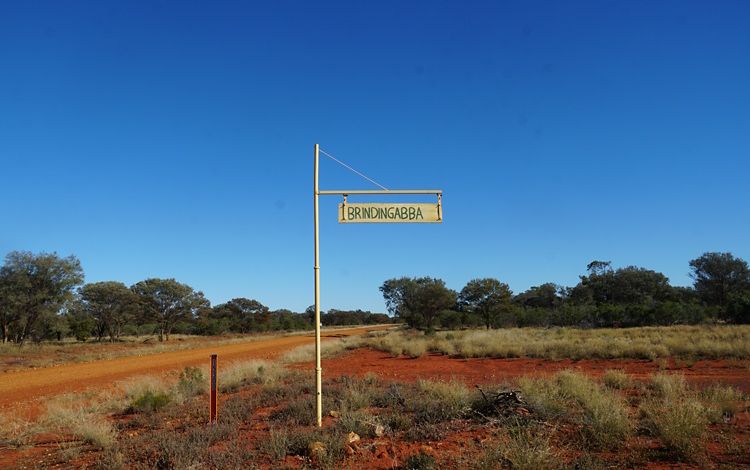
Wetlands are among the most productive and biologically diverse ecosystems on the planet. They’re crucial for water filtration, food security, carbon storage and stormwater storage. Sadly, they’re in danger.
In mid 2022, The Nature Conservancy (TNC) partnered with the NSW Government to support the purchase of the Brindingabba and Brinda Stations in NSW in an effort to protect their vital ecosystems and contribute to landscape scale conservation initiatives, such as Australia’s commitment to protect 30 per cent of lands and oceans by 2030.
Following this acquisition, Brindingabba National Park, NSW, managed by the state’s National Parks and Wildlife Service (NPWS), was created in December 2022. Brindingabba National Park, 150 kilometres north of Bourke in north-west NSW, will protect a 33,903 hectares of ecologically significant land for conservation. This includes the Paroo River and Cuttaburra Creek which links the Paroo River to Yantabulla Swamp.
Two nationally important wetlands will now be protected. The vast Yantabulla swamp which is more than 7,600 hectares lies at the heart of the Murray-Darling Basin’s healthiest river system. Lake Wombah, is an important freshwater wetland with surveys counting on average 19,253 waterbirds of up to 22 species. These areas form part of the Paroo Floodplain and Currawinya Key Biodiversity Areas. They meet many of the key criteria for future Ramsar listing as a wetland of international importance.
Quote: Molly McUsic
Meeting the global 30x30 conservation goal to protect at least 30 per cent of the Earth’s surface by 2030 is going to take replicating locally-driven protection initiatives, not just in Australia, but all across the world.
TNC supported the purchase by the New South Wales Government with generous contributions from The Wyss Foundation and artist Haley Mellin’s Art into Acres initiative through Re:wild. The newly created Brindingabba National Park will be managed by the state’s National Parks and Wildlife Service (NPWS).
The significant purchase follows the Queensland Government’s acquisition of two adjoining Cape York Peninsula properties and the landmark purchase of The Lakes, inland from Townsville.

Waning wetlands
According to the United Nations, although wetlands only make up approximately six per cent of the Earth’s surface, 40 per cent of all flora and fauna species live or breed in these ecosystems. Yet wetlands are disappearing at a faster rate than forests.
Wetland conservation and protection is a vital aspect of our work and plays a key role in the fight against climate change. The river and wetland ecosystems at Brindingabba remain in excellent ecological condition, and while few surveys have been conducted in the region, evidence already highlights the area's exceptional value for conservation.
Forming part of the Cuttaburra basin within the Mulga Lands bioregion, Brindingabba features 30 different ecosystems. They include the Critically Endangered Great Artesian Basin Springs community, Endangered Coolibah-Black Box woodlands, the Endangered Brigalow-Gidgee woodlands and shrublands, Mitchell Grass grasslands and complex lignum swamps.
Lake Wombah, on the NSW-Queensland border, can support tens of thousands of waterbirds every year. The Yantabulla Swamp is a vital breeding ground and habitat for waterbirds, including Black Swans, Pink-eared Ducks, herons and Australia's rare waterfowl Vulnerable Freckled Duck.
Brindingabba is also home to the endangered Kultarr, a small carnivorous marsupial, and the Grey-crowned Babbler, Brolga and Hooded Robin.
The Endangered Lancewood, Acacia petraea, is found in at least 5 locations on Brindingabba and in NSW is only known from two other unprotected properties.

Cultural and historic significance
Located in the traditional Paroo River country of the Budjiti and Parunti and Wongaibon People, Brindingabba features extensive Aboriginal artefacts and hearth sites that reflect over 13,000 years of Indigenous occupation. The property is also home to the historic Brindingabba Homestead, constructed around 1893.
Quote: Haley Mellin, Artist
This important act will safeguard the landscapes’ rich biodiversity and conserve nationally significant wetlands as well as Aboriginal cultural heritage sites.
The acquisition of Brindingabba will help fill gaps in the NPWS portfolio of protected regions. It will also strengthen First Nations local cultural knowledge, connections and economic opportunities.
Quote: James Griffin
This new National Park is a fantastic example of how partnerships can boost our efforts to conserve biodiversity
Conservation: prevention better than cure
Approximately 22 per cent of Australian land is protected in our national reserve system and 45 per cent of Australian waters. Despite being vital habitats and ecosystems, wetlands are historically under-represented in protection efforts. However, due to its size and remoteness, Brindingabba is expected to delight in terms of biodiversity in the coming years.






Help protect precious landscapes like Brindingabba
Will you help us conserve important habitats in the fight against climate change?
DONATE NOW

